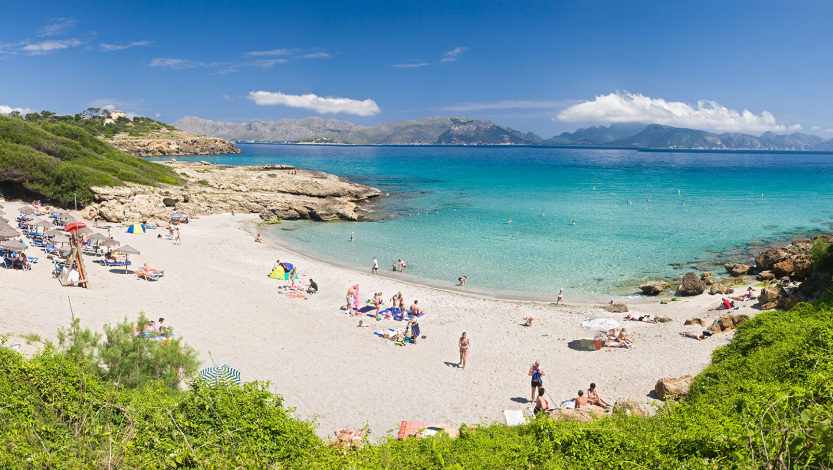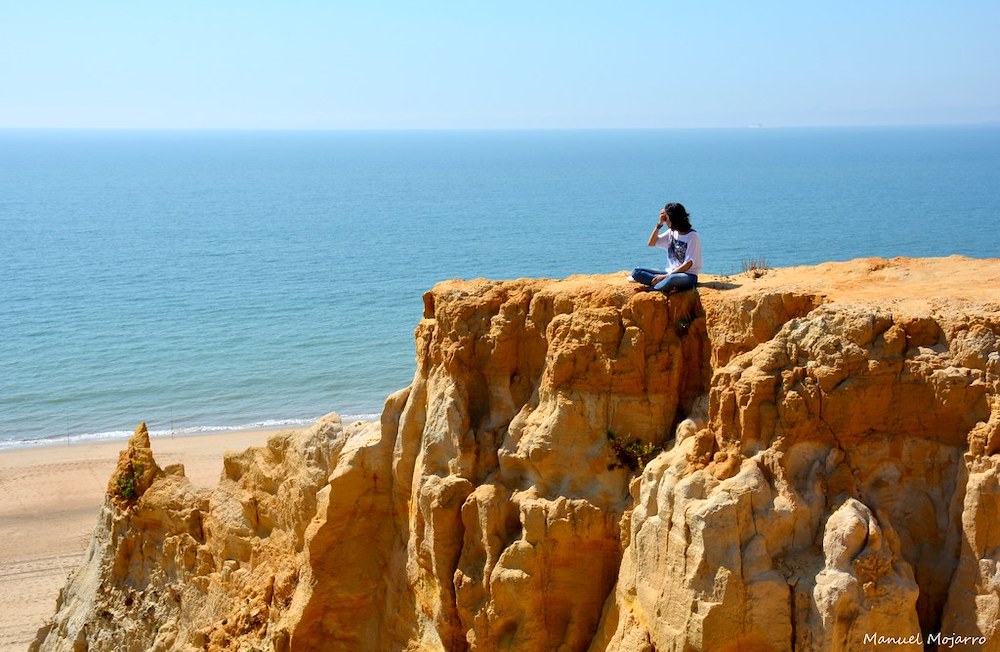Summer in Spain includes your pick of beaches in all shapes and sizes, long ones or rather hidden coves, black beaches and white beaches (just not pink, you only find those in the Bahamas), fine sand or pebbles and located on the mainland, urban beaches or surrounding the Balearic or Canary islands.
Spain is blessed with a long coastline and therefore more than 3,000 beaches. At least 430 of them have been awarded coveted Blue Flag status, which signifies cleanliness, beauty, amenities and safety.
In Spain, beaches come in all shapes and sizes, long ones or rather hidden coves, black beaches and white beaches (just not pink, you only find those in the Bahamas), fine sand or pebbles and located on the mainland, urban beaches or surrounding the Balearic or Canary islands.
Here are our final five of 10 total recommendations. (You can see Pt. 1 here.)
Start planning.
Marbella Beaches, Costa del Sol
If you have chosen glamorous Marbella for your holiday location, you are spoilt for chose as far as beaches are concerned. Expect some 17 miles of coastline with 23 beaches, Los Montereos and Rio Verde being the best known ones. They all are sand beaches protected by dunes and with a long path leading from Marbella to Puerto Banus. It takes you past Marbella Club and Puente Romano, each with
sun beds, cafes and piers.
Marbella’s house beach features a beach club, water sport facilities and all other amenities. It’s not an inexpensive destination but that is to be expected in this part of Spain.

Alcudia Beach, Mallorca
Alcudia is located in the north of the Balearic island of Mallorca, on the east coast. The town’s 8.7-mile- long beach is the largest of this group of islands Alcudia is the main reason why this area became extremely popular with visitors, tourists and families early on in Mallorca’s tourism boom which started in the 1950s.
This long stretch of Blue Flag beach features fine, white sand, smooth access to the water and plenty of faculties such as showers, restrooms, sun beds, umbrellas, water sports and even wi-fi. It can be divided into two parts, with the southern part with the most facilities but farther up the bay is where you can find a quiet spot, a few interesting coves and some more smaller beaches. Alcudia is also a small port from where you can go on boat trips up the coast.
In the summer months, the area can get very busy and that’s also when all the cafes and restaurants are open. (No pets are allowed on the beach.)

Mazagon Beach, Palos del a Frontera
This is an example of an urban beach, located in Mazagon, next to Castilla and Doñana beach in Andalusia. Together they form a coastline of nearly 60 kilometers, with plenty of golden sand, sandstone cliffs and pine woods as well as family-friendly facilities. The cliffs protect the beach from strong winds.
Mazagon is a more low-key resort than Cabo de Gata, but that doesn’t mean it doesn’t get plenty of visitors in the summer. There is a lighthouse and, in the summer ,many typical chiringuitos as the wooden huts are called, that sell drinks and tapas, among them the famous, juicy Huelva prawns.

Carnota Beach on the Coast of Death, Coruña in Galicia
From the south of Spain we now return to Galicia in the north, where there are also great beaches to be found. Just bear in mind, that Galicia has a much cooler climate than the south of the country. The crescent-shaped Carnota Beach is an expanse of white sand more than 7-kilometers long and bordered by dunes.
It’s also famous for its green environment and migratory birds. Right in the middle, the Valdebois River empties its sandy mouth into the ocean, a very interesting example of an estuary.
It is also Galicia’s longest beach.
Sant Pere Pescador Beach, Girona, Cataluña
Our final beach on this list, Sant Pere Pescador, is located north of Girona in the Gulf of Roses in Cataluña. It is included because it is also 7 kilometers long, with fine, white sand and dunes and a paradise for surfers, kitesurfers and – in a secluded area – for naturists. We tried to present to you the best Spanish beaches for every taste. Sant Pere is a breezy location and in the winters, strong storms can suddenly blow up. So, it’s best to just consider surfing and swimming in the summer.
It will also be a lot warmer.
––––––––––
You can read more here about beaches across Europe here in Dispatches’ archives.
You can read more from Inka here.
Inka Piegsa-Quischotte is an international attorney-turned-travel and lifestyle writer based in Spain. She has contributed to BBC/Travel, several in-flight magazines, TripSavvy (Spain) and TravelAwaits among many other publications.














